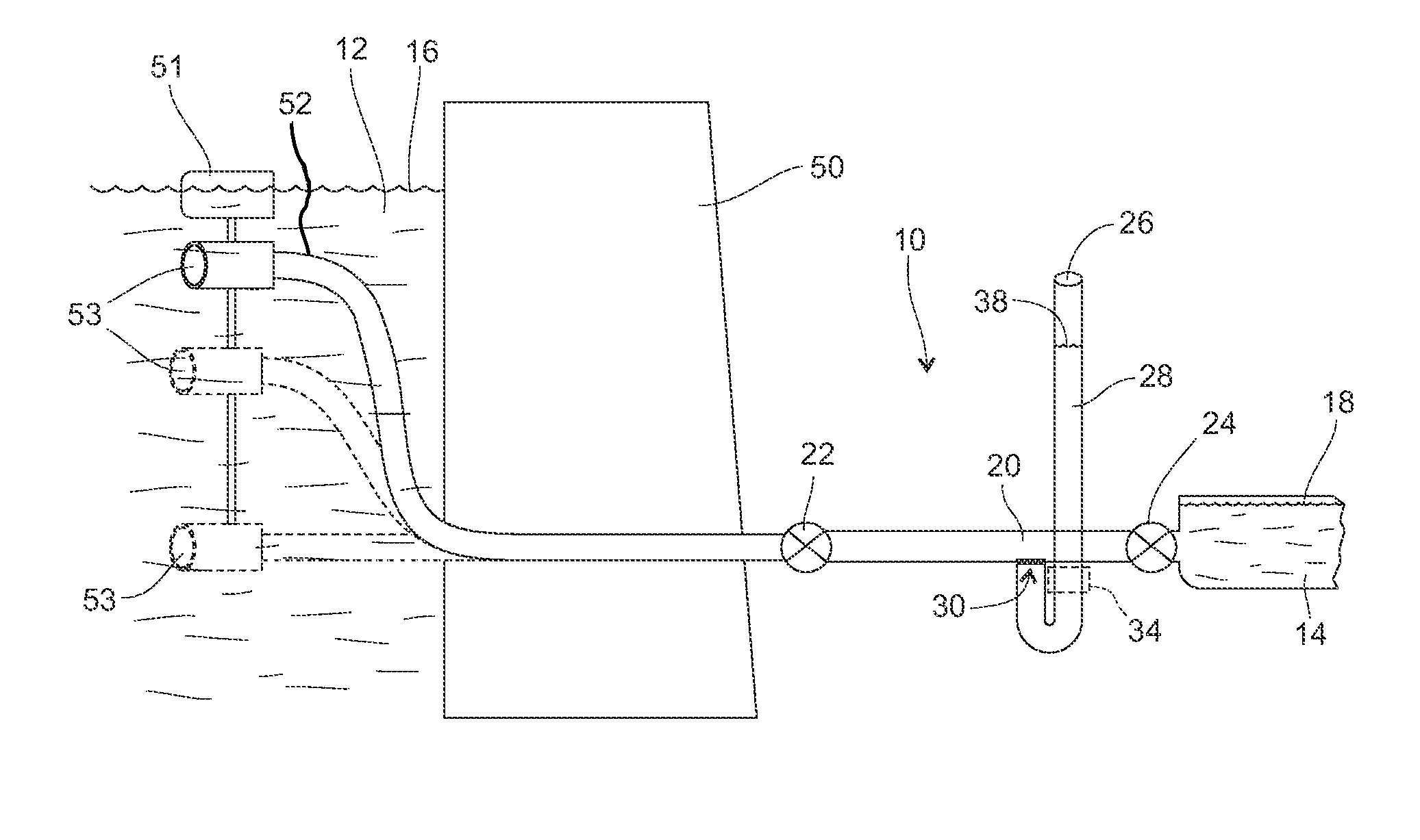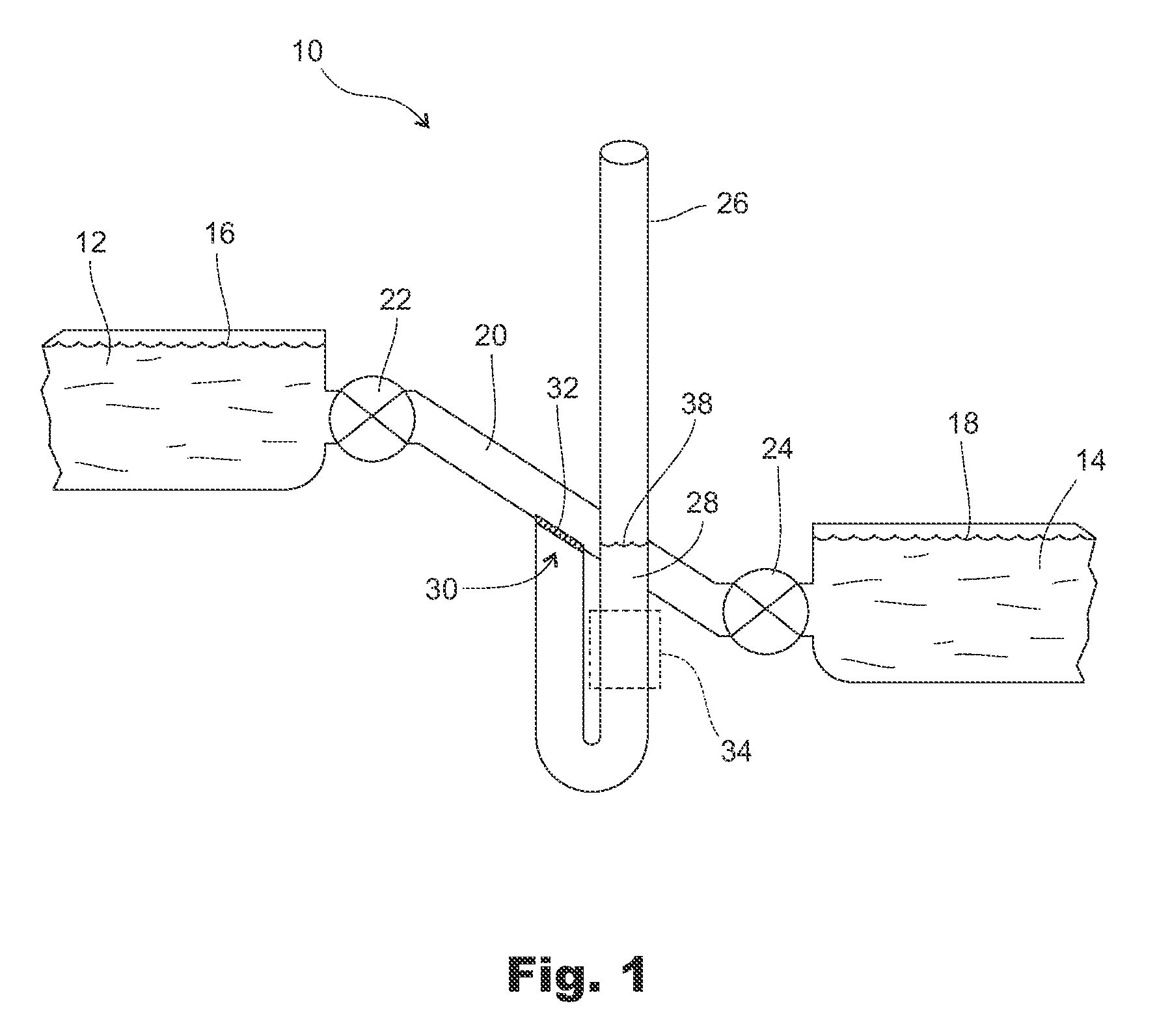Fish passage apparatus with variable inlets and method
a technology of fish passage and inlet, which is applied in the direction of mechanical equipment, coastline protection, water power plants, etc., can solve the problems of inability to effectively reach the head height of less than 90 feet, the method is also problematic, and the fish is injured passing through, so as to minimize the exposure of the migrant to the attack of larger fish. , the effect of avoiding the effect of catching fish
- Summary
- Abstract
- Description
- Claims
- Application Information
AI Technical Summary
Benefits of technology
Problems solved by technology
Method used
Image
Examples
Embodiment Construction
[0030]As shown in FIG. 1, the fish passage apparatus 10 of the present invention for fish passage between water bodies 12, 14 of different heights with different water levels 16, 18 comprises a connecting tube 20 providing fluid communication between upper and lower water bodies 12, 14, an upper valve 22 in the connecting tube 20 adapted to control flow of water to or from the upper water body 12, a lower valve 24 in the connecting tube 20 adapted to control flow of water to or from the lower water body 14, and a working tube 26 containing a column of water 28 with a surface level 38 opening into the connecting tube 20 between the upper and lower valves 22, 24 a working portion of which working tube 26 extends functionally vertical to above the water level 16 of the upper water body 12 and to below the water level 18 of the lower water body 14 and is vented at its top such that water can flow freely in and out of the working tube 26. A screen 30 covers the opening 32 of the working ...
PUM
 Login to View More
Login to View More Abstract
Description
Claims
Application Information
 Login to View More
Login to View More - R&D
- Intellectual Property
- Life Sciences
- Materials
- Tech Scout
- Unparalleled Data Quality
- Higher Quality Content
- 60% Fewer Hallucinations
Browse by: Latest US Patents, China's latest patents, Technical Efficacy Thesaurus, Application Domain, Technology Topic, Popular Technical Reports.
© 2025 PatSnap. All rights reserved.Legal|Privacy policy|Modern Slavery Act Transparency Statement|Sitemap|About US| Contact US: help@patsnap.com



